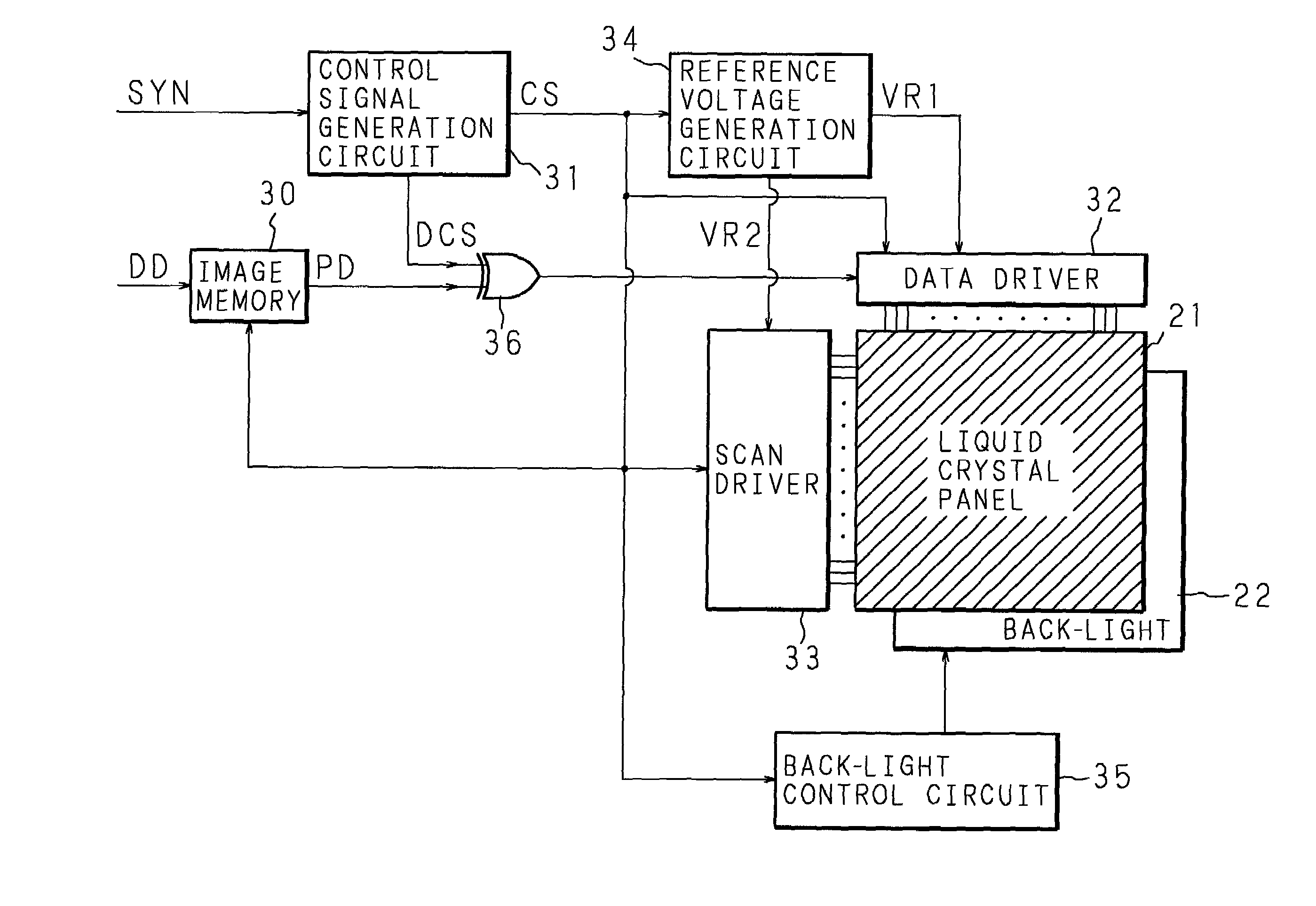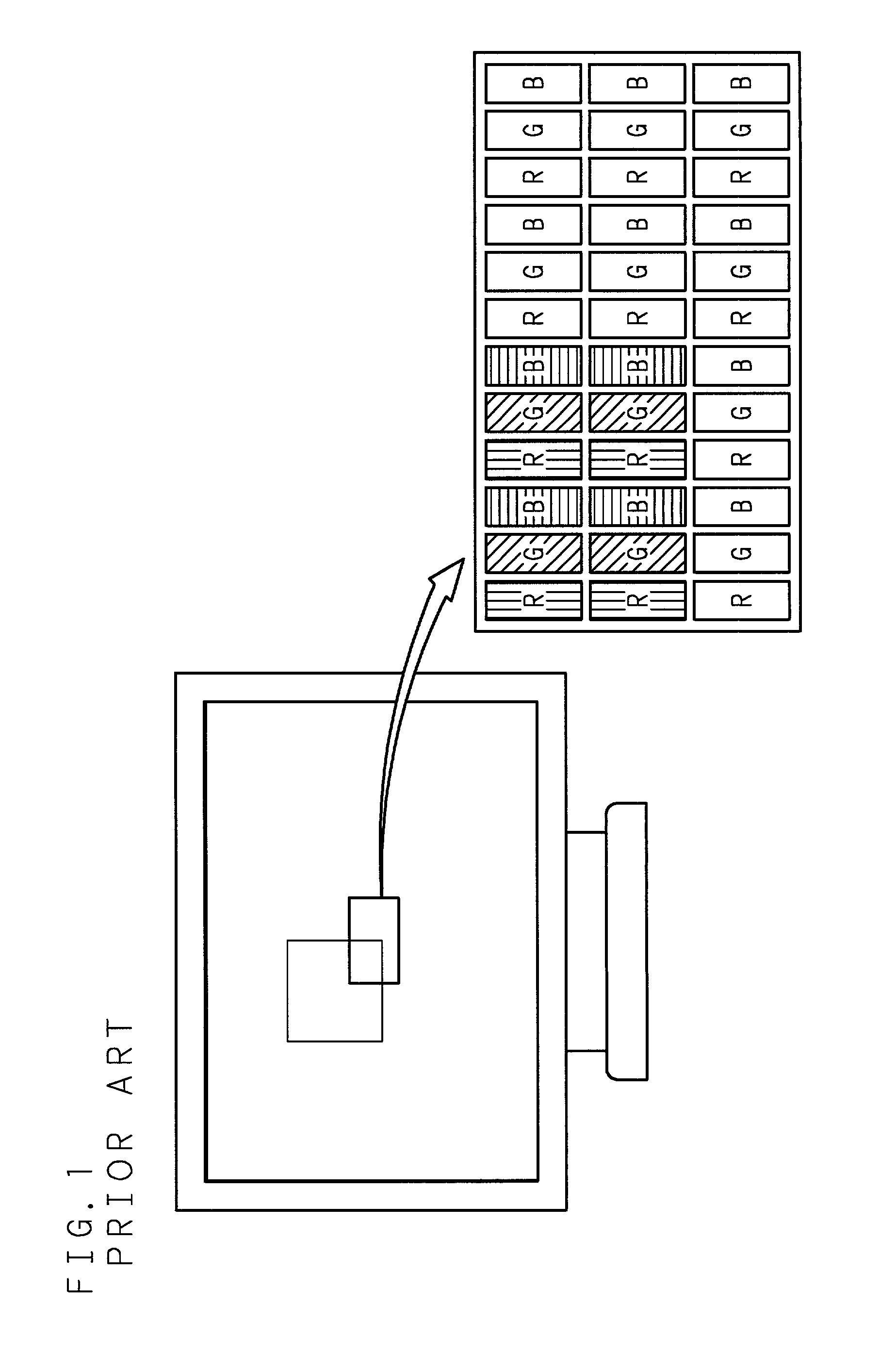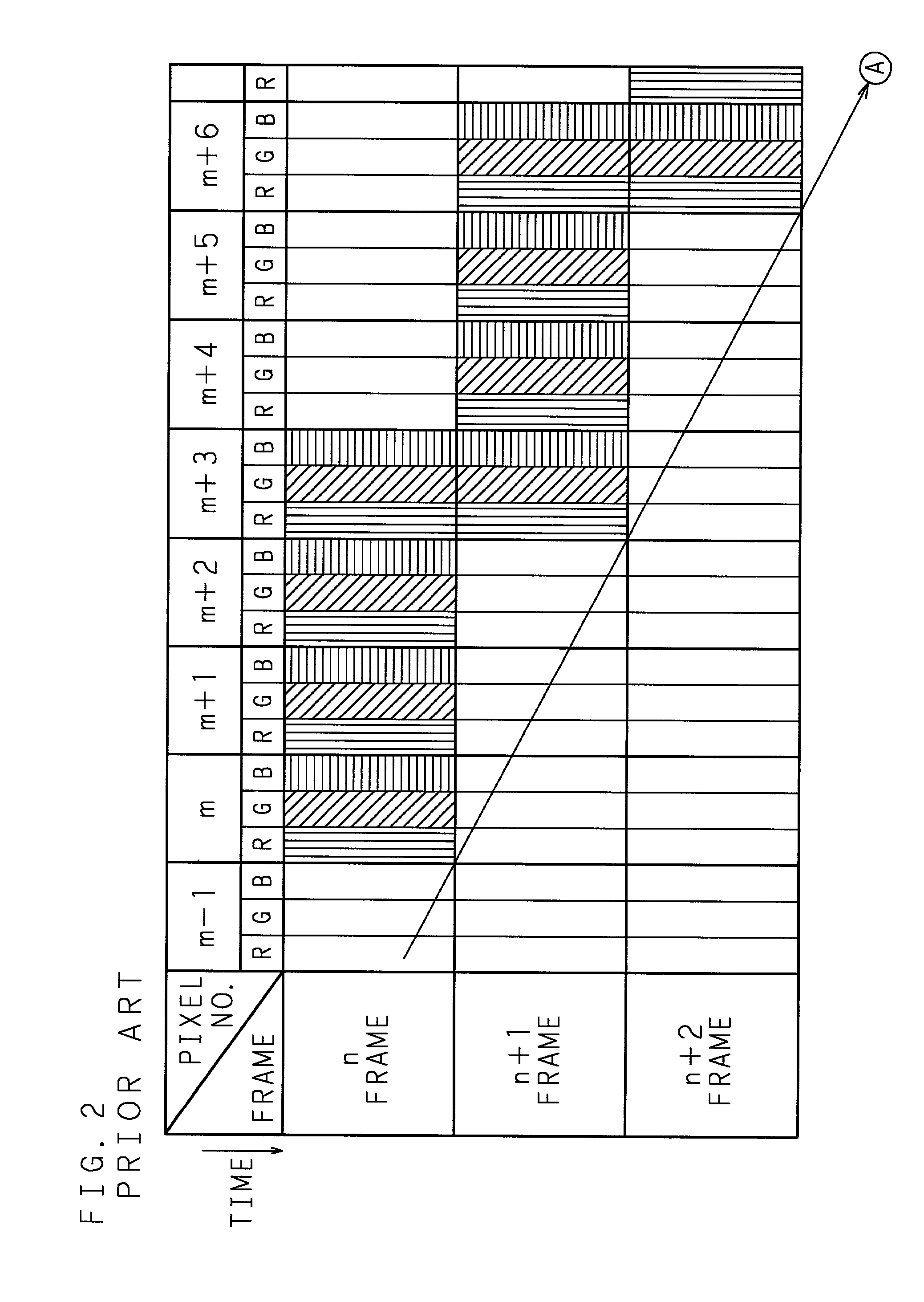Liquid crystal display device and liquid crystal display method
a liquid crystal display device and display device technology, applied in static indicating devices, non-linear optics, instruments, etc., can solve the problems of poor visibility of display devices, low production cost of stn type liquid crystal display devices, and inability to meet the needs of personal computers, etc., to reduce the degradation of image quality and limit the effect of image quality degradation
- Summary
- Abstract
- Description
- Claims
- Application Information
AI Technical Summary
Benefits of technology
Problems solved by technology
Method used
Image
Examples
first embodiment
(First Embodiment)
[0075]FIG. 7 is an illustration showing a drive sequence according to the first embodiment, and FIG. 8 is an illustration showing a visualized state of a moving image displayed by drive according to the first embodiment.
[0076]In the first embodiment, one frame is divided into two sub-frames, namely the first sub-frame and the second sub-frame, and data writing is performed in the leading first sub-frame and data erasure (i.e., black display) is implemented in the succeeding second sub-frame. During the data writing and the data erasure, the back-light 22 is kept in the “ON” state (stationary lighting).
[0077]Consequently, as shown in FIG. 8, in comparison with FIG. 3 illustrating a conventional example, the range in which the outline portion is displayed as a blur becomes narrower and the area where degradation of the image quality occurs is reduced, thereby improving the image quality.
second embodiment
(Second Embodiment)
[0078]FIG. 9 is an illustration showing a drive sequence according to one example of the second embodiment. In the second embodiment, one frame is divided into two sub-frames, namely the first sub-frame and the second sub-frame, and data writing is performed in the leading first sub-frame and data erasure (i.e., black display) is implemented in the succeeding second sub-frame. In this case, each of the first and second sub-frames is divided into a leading address period and a succeeding retention period, and the data to be displayed on the liquid crystal panel 21 is written in the leading address period of the first sub-frame. After the writing is complete, the data is held during the succeeding retention period, and then the written data is erased in the leading address period of the second sub-frame. After the erasure is complete, the erased state is kept during the succeeding retention period of the second sub-frame.
[0079]Lighting patterns of the back-light 22 ...
third embodiment
(Third Embodiment)
[0081]FIG. 11 is an illustration showing a drive sequence according to the third embodiment. The data writing process and data erasing process in the third embodiment are the same as those in the above-described second embodiment. Accordingly, data writing is performed in the address period of the first sub-frame and data erasure is executed in the address period of the second sub-frame. The back-light 22 is turned on only in the retention period of the first sub-frame to display the written data.
[0082]FIG. 12 is an illustration showing a visualized state of a moving image displayed by drive according to the third embodiment. In comparison with the conventional example, the range in which the outline portion is seen as a blur becomes narrower and the area where degradation of the image quality occurs is reduced, thereby improving the image quality. Moreover, in comparison with the first embodiment, since the time during which the back-light 22 is in the “ON” state ...
PUM
 Login to View More
Login to View More Abstract
Description
Claims
Application Information
 Login to View More
Login to View More - R&D
- Intellectual Property
- Life Sciences
- Materials
- Tech Scout
- Unparalleled Data Quality
- Higher Quality Content
- 60% Fewer Hallucinations
Browse by: Latest US Patents, China's latest patents, Technical Efficacy Thesaurus, Application Domain, Technology Topic, Popular Technical Reports.
© 2025 PatSnap. All rights reserved.Legal|Privacy policy|Modern Slavery Act Transparency Statement|Sitemap|About US| Contact US: help@patsnap.com



